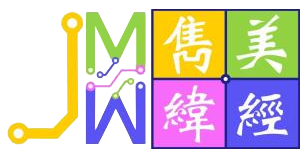The Future of Electronics: Diving into Flexible Circuit Boards
Explore the innovative world of Flexible Circuit Boards and their applications across various industries, from consumer electronics to medical devices.
Release time:
2025-01-30
Source:
Unraveling the Mystery of Flexible Circuit Boards
Have you ever wondered how electronics can be so compact yet so powerful? Well, one of the unsung heroes behind this magic is the Flexible Circuit Board. These ingenious pieces of technology are revolutionizing the way we think about electronics, allowing for more creativity and efficiency in design.
What Exactly is a Flexible Circuit Board?
Simply put, a Flexible Circuit Board is a type of circuit board made from flexible plastic substrates. Unlike traditional rigid circuit boards, these flexible versions allow for bending, twisting, and folding, making them ideal for applications where space is tight or unique shapes are needed.
Why Go Flexible?
So, why should manufacturers and engineers consider switching to Flexible Circuit Boards? Well, let me hit you with a few benefits:
- Space-saving: They can fit into small or oddly-shaped devices, making them perfect for modern gadgets.
- Lightweight: Flexible circuit boards are often lighter than traditional counterparts, enhancing portability.
- Durability: These boards can withstand extreme conditions, which is a major plus in industries like aerospace and automotive.
Applications Across Industries
Flexible circuit boards are not just a trend; they’re here to stay! Here's a sneak peek into some industries where they play a pivotal role:
1. Consumer Electronics
Smartphones, tablets, and wearables—oh my! These devices rely heavily on Flexible Circuit Boards to maximize performance while minimizing size. Imagine the intricate designs that keep your devices running smoothly!
2. Medical Devices
In the medical field, flexibility is key. Devices like wearable health monitors and flexible sensors benefit from the adaptability of Flexible Circuit Boards, enabling them to conform to the human body or fit in compact machinery.
3. Aerospace and Automotive
When it comes to vehicles and aircraft, every ounce counts! The aerospace and automotive industries utilize Flexible Circuit Boards for their lightweight and robust nature, ensuring safety and efficiency.
Challenges and Considerations
Now, it’s not all sunshine and rainbows. The transition to Flexible Circuit Boards does present some challenges:
- Cost: They can be pricier to produce compared to traditional boards.
- Design Complexity: Creating a functional design can require a higher level of expertise.
The Road Ahead: Trends to Watch
As we forge ahead into the future, keep your eyes peeled for these trends in the Flexible Circuit Board realm:
- Integration with IoT: Expect to see an increase in flexible boards in Internet of Things (IoT) devices.
- Advanced Materials: Research into new substrates and materials will enhance performance and durability.
Conclusion
In summary, Flexible Circuit Boards are not just a fancy trend—they represent a fundamental shift in how we design and manufacture electronic devices. With their myriad applications, they’re set to become even more integral to the tech we rely on daily.
So, next time you pick up your smartphone or don a health tracker, give a nod of appreciation to the incredible Flexible Circuit Board that makes it all possible!
flexible circuit board
previous page
Related News
2024-12-16







